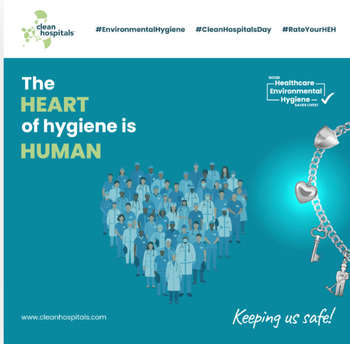
An IP's Suggestions for Proper Cleaning and Disinfection Products and Education
Doe Kley, MPH, RN, CIC, LTC-CIP, T-CHEST speaks with ICT® on narrowing down how many disinfecting products their facilities should have and the education that they need about the cleaners and checking their competency in using those products.
Infection preventionists (IPs) and environmental services (EVS) personnel should work together to maintain the highest standards in their facilities. They should take a step back to evaluate their cleaning and disinfection programs program objectively and critically—and that includes monitoring the cleaning and disinfecting products used, how the products are used, and making sure that the facilities have the fewest products needed to fulfill the requirements.
In this final installment of Infection Control Today®’s (ICT®’s)interview with Doe Kley, MPH, RN, CIC, LTC-CIP, T-CHEST, principal IP for The Clorox Company, advises on how IPs and EVS personnel can narrow down the number of disinfecting products their facilities have in-house.
ICT: Once the IP and EVS have completed the inventory of the disinfecting products in-house, do you have any suggestions on narrowing down the number of products?
Doe Kley, MPH, RN, CIC, LTC-CIP, T-CHEST: First and foremost, ensure that your disinfectants are EPA-registered and health care-grade. [In the previous installment] remember those 2 quat-based disinfectants from different manufacturers we found during the observation rounds? Now is the time to simplify. Do you need 2 of essentially the same thing? Narrow it down to one or the other.
Ideally, you should only need 3 disinfectants in total in-house, with one being a sporicidal agent such as bleach. It's always good to have a bleach-based disinfectant for tough-to-kill pathogens like Clostridioides difficile, norovirus, and Candida auris. Historically, bleach seems to have been the CDC's go-to disinfectant for emerging pathogens. I recall bleach being recommended during the 2009 novel avian flu pandemic until more was known about this novel pathogen. Why is this? Because bleach, when appropriately diluted, is an intermediate-level disinfectant. It is at the top of the hierarchy of difficult-to-kill pathogens. And more recently, bleach has been touted in the literature as a key control measure used to contain outbreaks of Candida auris around the globe.
Regarding product selection, the IP and EVS can lean into the CDC's properties of the ideal disinfectant. You are looking at table 2 of the CDC's Disinfection and Sterilization Guidelines. You can see there are 13 properties, including things like fast-acting, easy-to-use, and good cleaning properties. Now, we must be realistic—we will never find that 1 product with every one of these properties, so I recommend identifying maybe the top 2-4 from this list that are your non-negotiables. Now you are armed with [a list] to compare your 2 quat disinfectants to identify the one that best meets your expectations or needs.
My top properties in a disinfectant are kill claims and ease of use. Consider products that have kill claims for the pathogens of interest for your facility. Which pathogens are responsible for the facility's health care-associated infections? What about seasonal pathogens like influenza and respiratory syncytial virus? And other pathogens of concern like SARS-CoV-2 (the COVID-19 virus) or rapidly emerging pathogens like Candida auris?
For ease of use, I prefer ready-to-use one-step cleaner-disinfectant products. In these resource-challenged times, ready-to-use products require no preparation time, and there is no risk of dilution error. There are also no secondary containers to label or clean between uses.And one-step cleaner-disinfectants contain both detergents and disinfectants. If a surface is visibly clean, with few exceptions, cleaning and disinfection can be achieved in 1 step. That’s a huge time saver for a short-staffed EVS team.
ICT: Do you have any final thoughts for our audience?
DK: Yes, I would like to remind folks that education isn’t a one-and-done thing. Just because you’ve taught them doesn’t mean they’ve learned. There must be a didactic (or classroom) component and hands-on training. Adult learners learn in various ways, so incorporate as many senses - like hearing, seeing, and touching - as possible. Make it interactive – for example, include some knowledge checks, quizzes, or polls during the session.
We mustn’t forget to include competency. This ensures that staff understands and tests both their knowledge and their skills. A competent worker can consistently perform a task and demonstrates the desired behaviors, whatever the situation. Competency can be assessed in many ways, as shown on the slide. The best approach to competency is to incorporate as many of these ways as possible. If you think back to your last CPR certification, the instructor likely included several, if not all, different ways to assess your competency in administering this life-saving skill. And by the way, preventing infections through cleaning and disinfection is also a life-saving skill.
Last, you don’t have to reinvent the wheel. Be sure to check with your disinfectant manufacturer—the experts—for education and training resources. We have training toolkits, videos, handouts, posters, and online learning platforms.
Newsletter
Stay prepared and protected with Infection Control Today's newsletter, delivering essential updates, best practices, and expert insights for infection preventionists.





